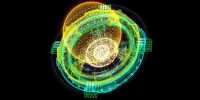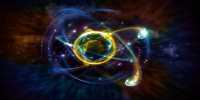What is heavier, a kilogram of lead or a kilogram of feathers? Physicists take this old joke very seriously since they have been working to prove that things in a gravitational field accelerate at the same rate ever since Galileo. This is known as the universality of free fall, and it has been shown to be accurate to a precision of less than one part in a trillion.
Researchers utilized a specialized satellite to carefully verify the so-called Weak Equivalence Principle, a cornerstone of Einstein’s general relativity, as detailed in papers in Physical Review Letters and a special edition of Classical and Quantum Gravity.
Two objects of various materials and masses are predicted to accelerate at the same rate in a gravitational field if no other forces are acting on them.
To test this, scientists created the MICROSCOPE satellite. Two cylindrical test masses, one made of titanium and the other of a platinum-rhodium alloy, were inserted within. Electrostatic accelerometers were used to keep these masses stationary and to track their progress. The two masses’ accelerations will differ if the equivalence principle is violated.
Galileo is credited with proving this by using cannon balls of various masses to fall from the Leaning Tower of Pisa. David Scott, the commander of Apollo 15, accomplished it on the Moon with a feather and a hammer. This experiment increased the precision of that knowledge to one part in 1015.
Gilles Métris, a researcher at the Côte d’Azur Observatory and member of the MICROSCOPE team, stated in a statement that “we have new and far better limitations for any future theory, because these theories must not break the equivalence principle at this level.”
The most recent data is ten times more accurate than the initial findings revealed in 2017 and one hundred times more accurate than what is possible on Earth. The team claims that it is possible to increase precision even further with a new satellite, possibly by a factor of 100.
“We don’t see any improvement with a space satellite experiment for at least a decade or maybe two,” added Manuel Rodrigues, a researcher at the French aerospace lab ONERA and a member of the MICROSCOPE project.
Scientists aren’t merely testing the Weak Equivalence Principle to show that Einstein was mistaken. The best theory of gravity we have up to this point is General Relativity, however it clashes with quantum mechanics. We might gain understanding of how to reconcile the two by studying gravity with the utmost level of precision.
















